Portuguese: Monumento pré-histórico da Praia das Maçãs Also known as: Tholos do Outeiro das Mós, or Tholos da Praia das Maçãs
In the Neolithic era, about 4,000BC, an artificial cave was dug on this site. It had a corridor and central burial chamber with side niches. Later, a large tholos was built. The site was used through the 3rd millennium BC.
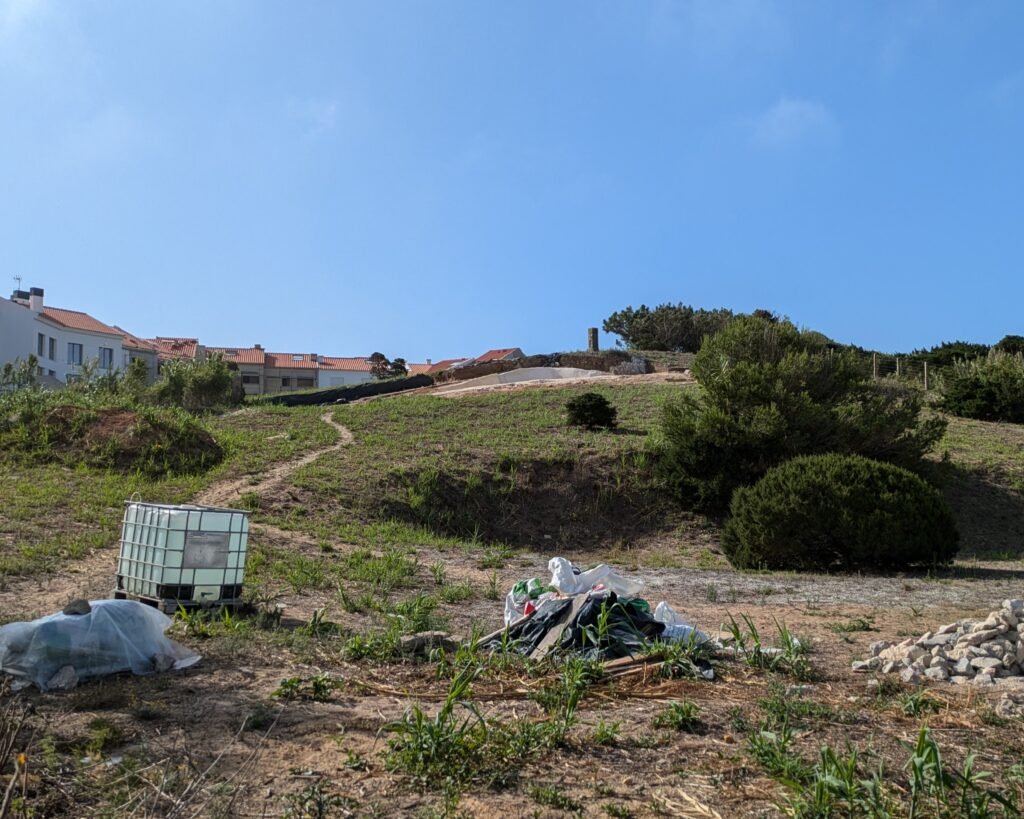

The site was originally identified in the 1920s and was excavated in the 1960s. It was declared a National Monument in 1974, but after that it was mostly abandoned and subject to neglect and vandalism. In the early 2000s, the municipality of Sintra purchased the land it was on with the objective of refurbishing it and turning it into a site for education and tourism, including an interpretive centre. Further excavations were made starting in 2020 and continuing through the present day.1 The interpretive centre is still only in the planning stages. The site is undergoing reconstruction work as well as active archaeological excavations. It is therefore not open to the public, but there are occasional guided tours.
The visible structure is a tholos, a collective funerary structure with a circular chamber covered by a false dome. The site was constructed in stages, and in the oldest stage it was an artificial cave (or hypogeum). Subsequently, the tholos was built.
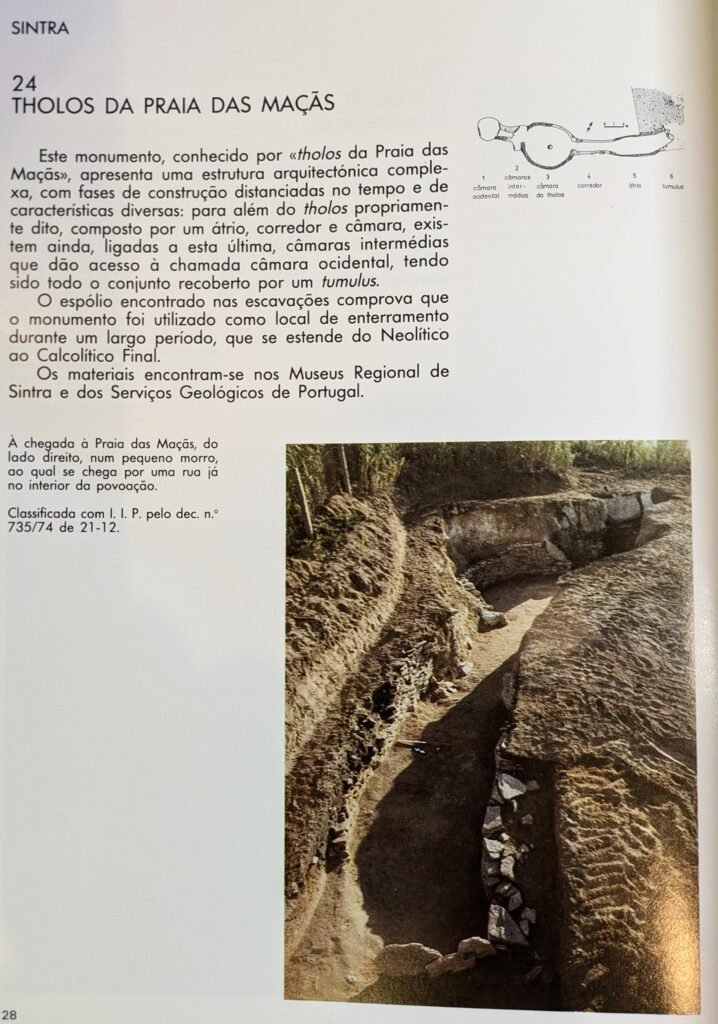
The article at the left is from the book, “Roteiros da Arqueologia Portuguesa 1: Lisboa e Arredores.” (Routes of Portuguese Archaeology 1: Lisbon and its surroundings)2
Translation:
“This monument, known as “tholos of Praia das Maçãs,” shows itself as a complex architectural structure, with construction phases separated in time and with diverse characteristics: in addition to the tholos itself, made up of an atrium, corridor and chamber, there are also intermediate chambers connected to the latter, which give access to the western chamber, the whole site was covered by a tumulus.
The artefacts found in the site prove that the site was used as a burial chamber for a long period of time, which extended from the Neolithic to the Later Chalcolithic.”
I have included this page to give further information and photographic evidence of a closed site. The book is copyright 1986 by the Department of Archaeology of the Portuguese Institute of Cultural Heritage, but it is currently out of print and not available online.
In May 2025, a guided tour was advertised to the public by the town hall of Sintra, in honour of the International Day of Megalithic Culture. The photos and information below are from the guided tour:
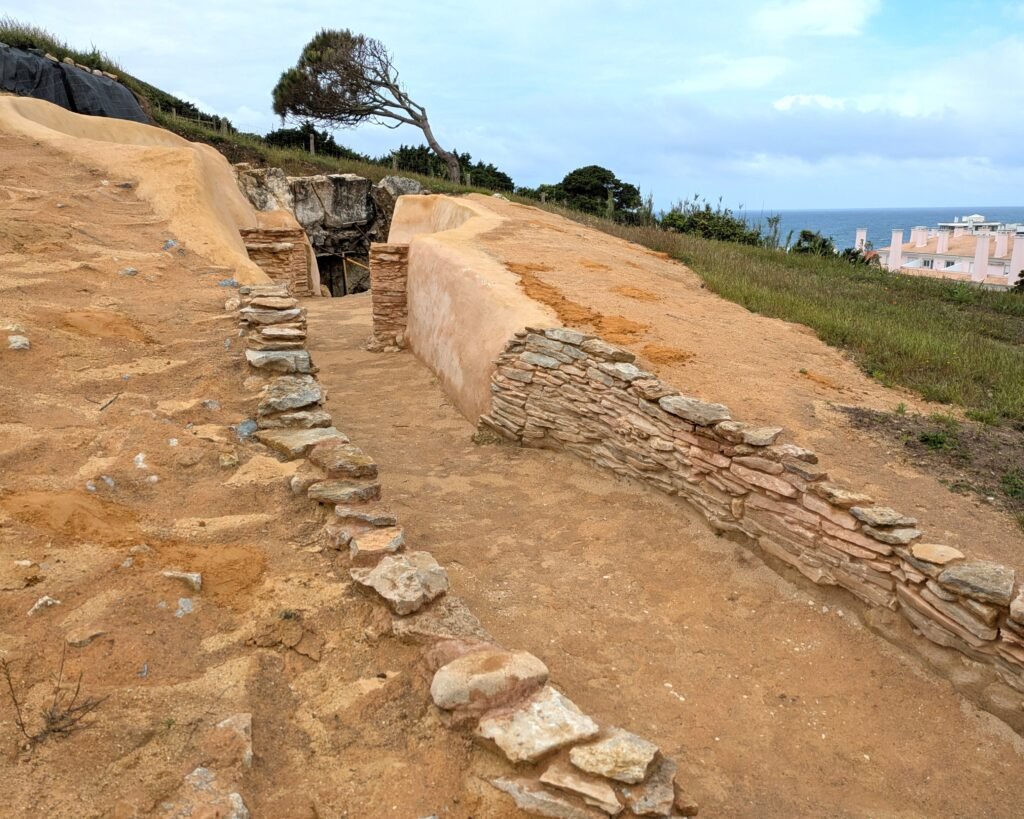
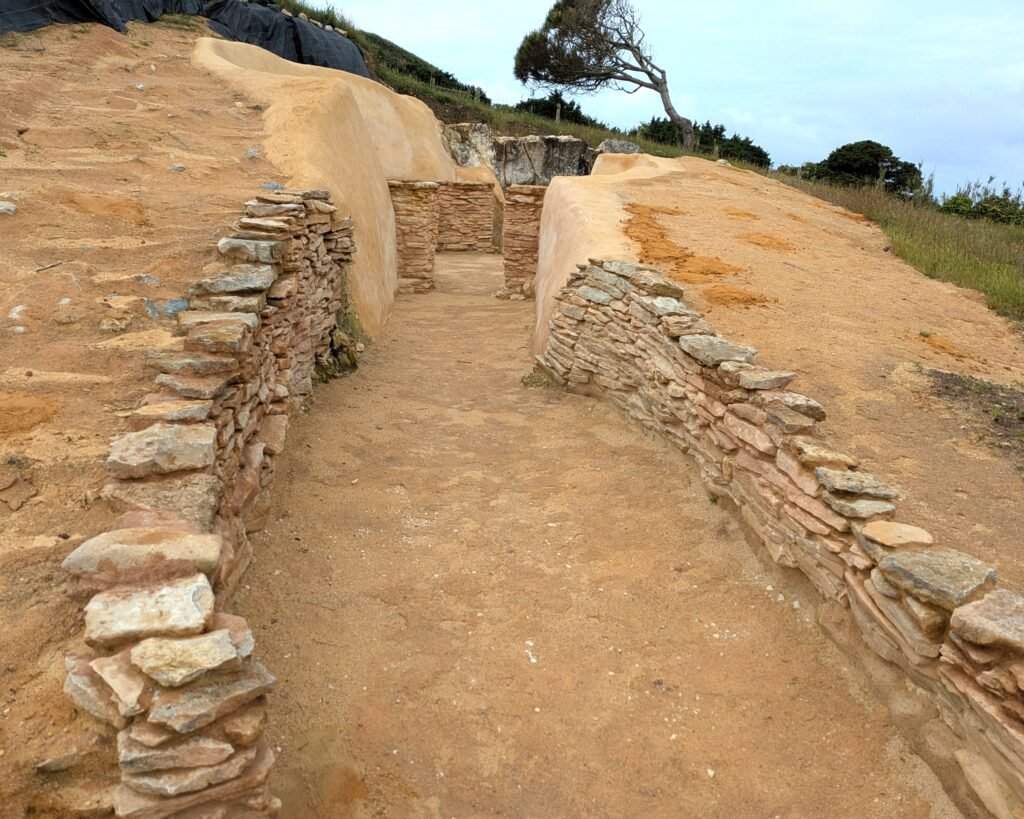
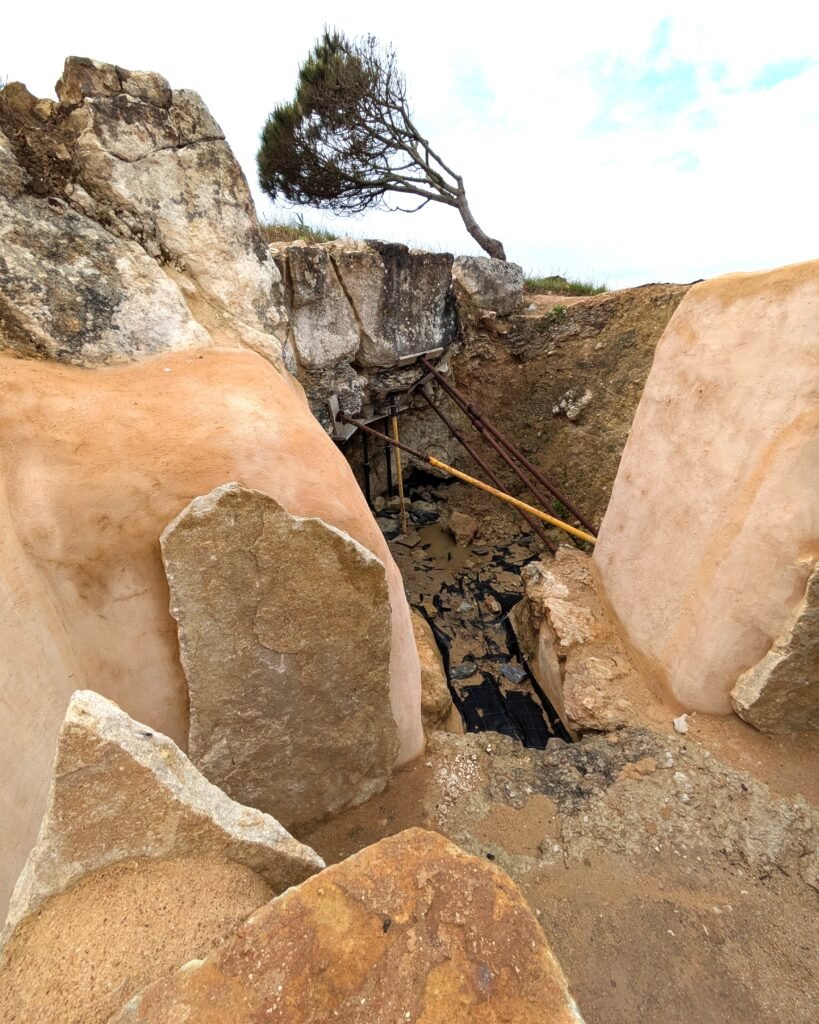


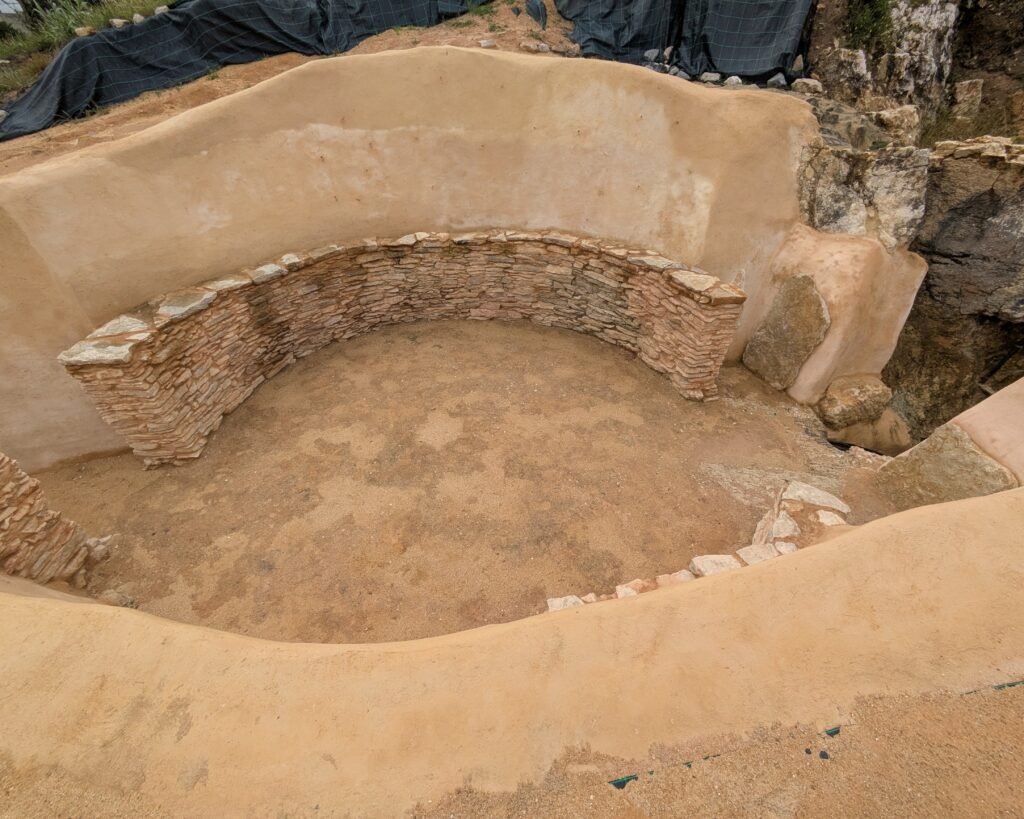


A guided visit is of exceptional value. We were guided by two of the main archaeologists who are working on the site, Catarina Costeira and Eduardo Porfirio. They explained things completely and shared lots of information, including things that are definitely not obvious from looking at the site. For example, Catarina explained that in the area outside of the monument many ceramics were found (including many complete pieces) that are later than the monument, indicating that the site was of significance longer than its construction. She also explained that they don’t believe the roof of the tholos was wooden, as they haven’t found any post holes or other evidence of such. (They also haven’t found stones from the roof, but those might have been removed.)
She also talked about the space between the entrance and the chamber of the tholos. (Presently, these sections are cemented in to protect the structure of the monument.) She explained that during excavations they found significant “negative spaces” that might have been original construction, perhaps a large antechamber.
Catarina also explained that they’re not sure whether or not the tholos included the cave in its functional space. She said that no Chalcolithic remains were found in the cave, but that they also didn’t find any evidence of a wall blocking it off. She indicated that they believe there might be more caves in the hill (as most human-made caves in the area are found in groups, usually of four) but that they haven’t been identified yet.
Location
The monument is located in the district of Lisbon, municipality of Sintra, parish of Colares. It is situated on a hill in the middle of the town of Praia das Maçãs, overlooking the beach.
Access
The entrance to the monument is off the main road, in a residential area along Rua Afonso Banheiro. It’s an easy walk up the hill from the tram (életrico) station and/or the city market.
The monument is not open to the public. There are active archaelogical excavations ongoing, as well as restoration work. The town hall of Sintra hosts occasional guided visits, and the archaeological museum in Odrinhas may be able to organize a visit at other times if requested.
Signage
There are signs on the gate to the monument describing it and the work being done.

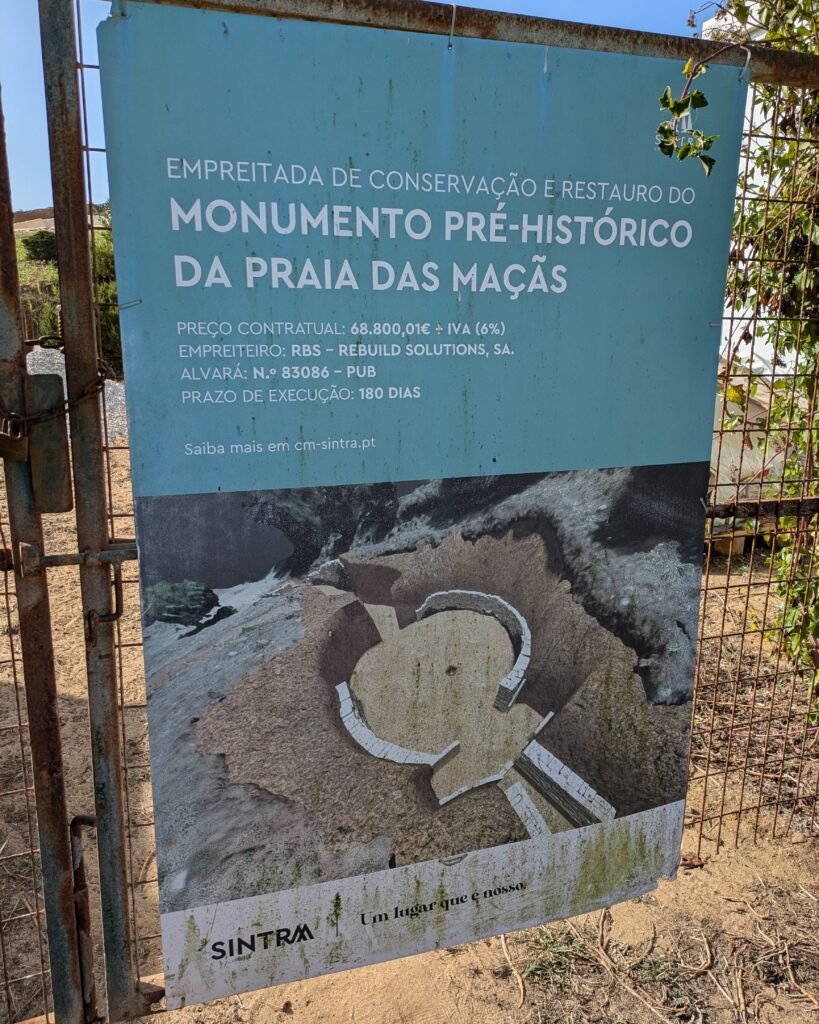
Links
- Article (in English) from Wikipedia
- Website (in Portuguese) of the local museum, the Archaeological Museum of São Miguel de Odrinhas
- Description (in Portuguese) of the restoration project from the Municipality of Sintra (March 2022)
- Article (in Portuguese) with photographs of the restoration from Jornal de Mafra (June 2022)
- Videos part 1 and part 2 (in Portuguese) about the excavation of the site in 2021 from UNIARQ
- Description (in Portuguese) from the Archaeologist’s Portal of Directorate-General of Cultural Heritage
- Designation (in Portuguese) as a National Monument by the Directorate-General of Cultural Heritage
- Detailed information (in Portuguese) in the database of the Directorate-General of Cultural Heritage
Nearby
You can see more information about the site and some of the artefacts that were collected there at the Archaeological Museum in São Miguel de Odrinhas (MASMO), about 15km away. The Megalithic site of Barreira is near that museum. There are fossilized dinosaur footprints nearby on Praia Grande. The Tholos do Monge is another tholos, about 12km away in the Sintra Mountains.
Sources
- Porfírio, Eduardo, Catarina Costeira and Teresa Simões. “O Monumento Pré-Histórico Da Praia Das Maçãs (Sintra): Atividades de Divulgação E Educação Patrimonial Realizadas No Âmbito Das Recentes Escavações Arqueológicas .” Arqueologia Em Portugal 2023 – Estado Da Questão, Associação dos Arqueólogos Portugueses, 2023, pp. 1963–1978. Viewed on Academia.edu on 1 May 2025. ↩︎
- Roteiros Da Arqueologia Portuguesa 1: Lisboa E Arredores. Instituto Português do Património Cultural, Departamento de Arqueologia, 1986. ↩︎
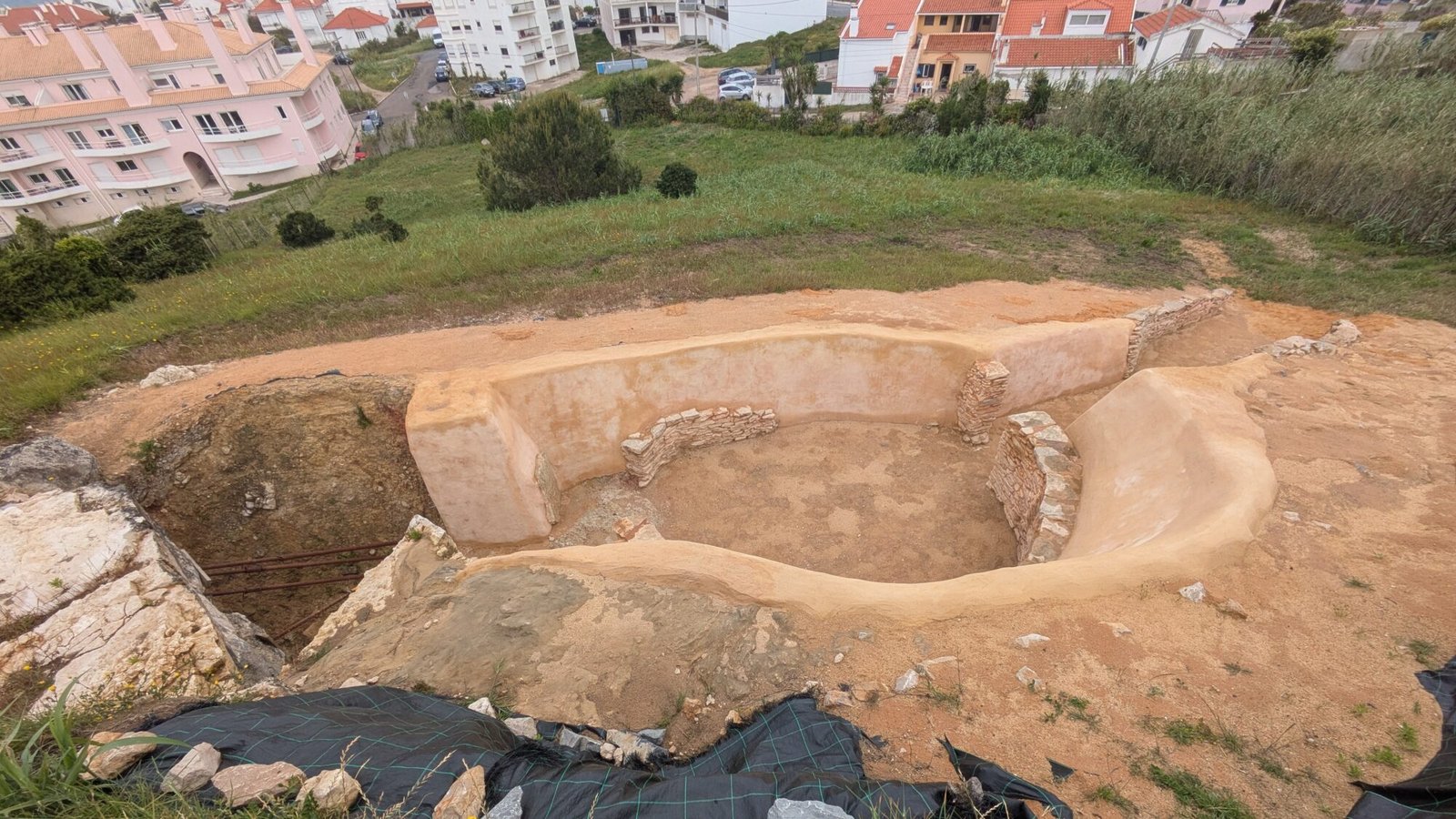
Pingback:Tholos do Monge - Prehistoric Portugal
Pingback:Archaeological Museum of São Miguel de Odrinhas (MASMO) - Prehistoric Portugal